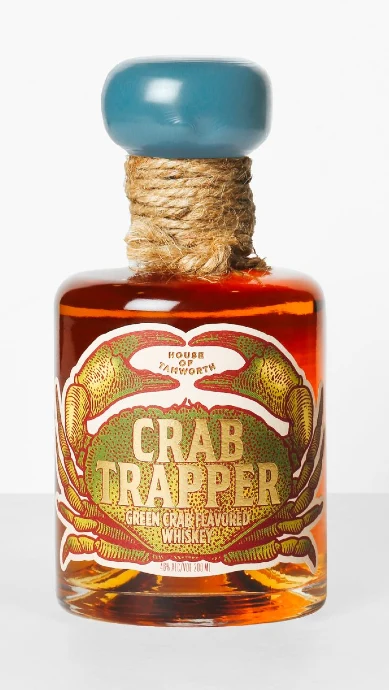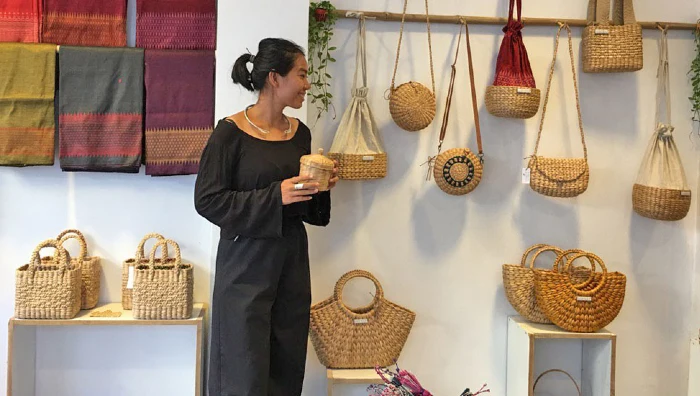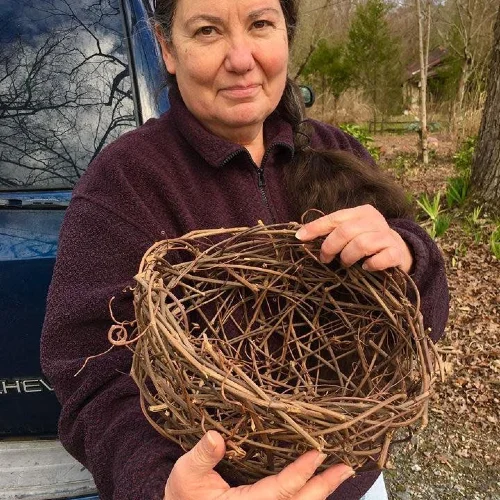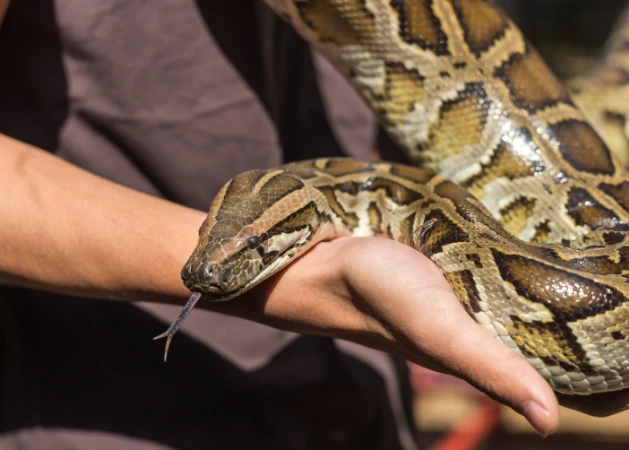Across the globe, the spread of invasive species has emerged as a major environmental challenge, threatening native ecosystems and local economies. However, in an inspiring twist, some resourceful individuals and communities are turning this crisis into an opportunity, finding innovative ways to combat these invaders while also deriving economic benefits.
Suffice it to say that the following have all managed to turn an invasive problem into a profitable side-hustle with the added benefit of helping the local ecosystem.
Python Hunters of the Florida Everglades

In the lush swamps of the Florida Everglades, hunters like Amy Siewe are engaged in a dramatic battle against one of the region’s most formidable invasive species – the Burmese python. These massive reptiles, which can exceed 18 feet in length, have wreaked havoc on local wildlife populations. Siewe and her fellow hunters are licensed to track and capture these snakes. In a bid to ensure no part of the python goes to waste, Siewe crafts unique python leather accessories, transforming a problematic species into a source of sustainable fashion. “It’s about making the most out of an unfortunate situation,” she explains.
An Innovative Distillery on the East Coast
Further north, the invasive green crab is posing a significant threat to native shellfish populations along the East Coast. In an inventive response, New Hampshire’s Tamworth Distilling is utilizing these crustaceans to produce a unique crab whiskey called Crab Trapper, a process that involves thousands of green crabs for each batch. Founder Will Robinson sees potential beyond spirits: “Creating a market for soft shell green crabs could revolutionize our approach to this invasive species.”
Crab Trapper earned Tamworth Distilling the coveted Food & Wine’s 2023 Drinks Innovators of the Year.

Bricks from Invasive Reeds in Senegal
In Senegal, invasive reeds that clog waterways and displace native species are being transformed into a resource. Local entrepreneurs are harvesting these reeds to produce eco-friendly bricks. This innovative solution not only helps clear invasive plants but also provides a sustainable building material, reducing the need for deforestation and contributing to the local economy.
Cambodia’s Fight Against Water Hyacinths

In Cambodia, the non-profit Rokhak has taken on the challenge posed by invasive water hyacinths in Lake Tonle Sap. These aquatic weeds, while beautiful, choke the life out of local waterways. The non-profit empowers local women by training them to harvest these plants and turn them into high-quality woven baskets and rugs.
These products are then sold both locally and internationally, providing employment and skills training to the community. “Our goal is to create sustainable livelihoods while addressing environmental concerns,” says the organization’s director.
Turning Mesquite into Biofuel in Africa
In parts of Africa, the invasive mesquite tree, originally from South America, has been spreading aggressively, harming local ecosystems. However, communities have found a way to turn this ecological threat into an energy solution. By converting mesquite into biofuel, they’re not only removing an invasive species, but also creating a sustainable energy source. This approach provides a renewable alternative to fossil fuels and offers economic opportunities in biofuel production.
Chefs Turning Invasives into Culinary Delights

Around the world, innovative chefs are also joining the fight against invasive species by incorporating them into their menus. From green crabs to venomous lionfish, these culinary pioneers are encouraging diners to partake in controlling invasive populations through their taste buds. Ryan Chadwick, who runs a lionfish supply company, views this as more than just a novelty. “It’s about integrating sustainable practices into our diet. Eating invasives might not eradicate them, but it’s a step towards managing their populations responsibly,” he says.
Farming on Hyacinth Mats in Bangladesh

In Bangladesh, water hyacinth, an invasive aquatic plant, has been causing significant problems by blocking waterways and affecting fish populations. In a unique adaptation, some communities are using these dense mats of hyacinth as floating platforms for farming. This method not only helps control the spread of the invasive plant but also provides a new way to cultivate crops in flood-prone areas, enhancing food security.
European Rabbit Control in Australia
Australia has long struggled with the invasive European rabbit, which has caused extensive ecological damage. Efforts to control their population have included the introduction of natural predators and diseases specific to rabbits, alongside traditional methods like fencing and hunting. These measures have helped reduce rabbit numbers and allowed native vegetation and wildlife to recover, showcasing a multifaceted approach to invasive species management.
Kudzu: The Vine That Ate the South

In the southern United States, kudzu, an invasive vine introduced from Asia, has overrun large areas, smothering native plants and trees. Innovative solutions include using kudzu for basket weaving, papermaking, and even as a culinary ingredient in dishes and drinks.
These creative uses help control the spread of kudzu while promoting cultural and artistic endeavors.
Asian Carp as a Sustainable Food Source

In the United States, Asian carp have invaded many waterways, outcompeting native fish species. In response, there are initiatives to market these fish as a sustainable food source, with experts outright begging people to eat the invasive species. By encouraging the consumption of Asian carp, these programs aim to control the population of this invasive species while providing a nutritious and eco-friendly food option.
A Global Movement for Ecological Balance
The battle against invasive species is far from over, but these examples offer a glimpse into how creativity and entrepreneurship can play a role in ecological management.
By harnessing the economic potential of these species, local communities aren’t only mitigating environmental damage, but also creating new economic pathways.
This global movement showcases the power of human ingenuity in the face of environmental challenges, proving that sometimes, the best defense against ecological threats is a proactive and innovative offense.



















